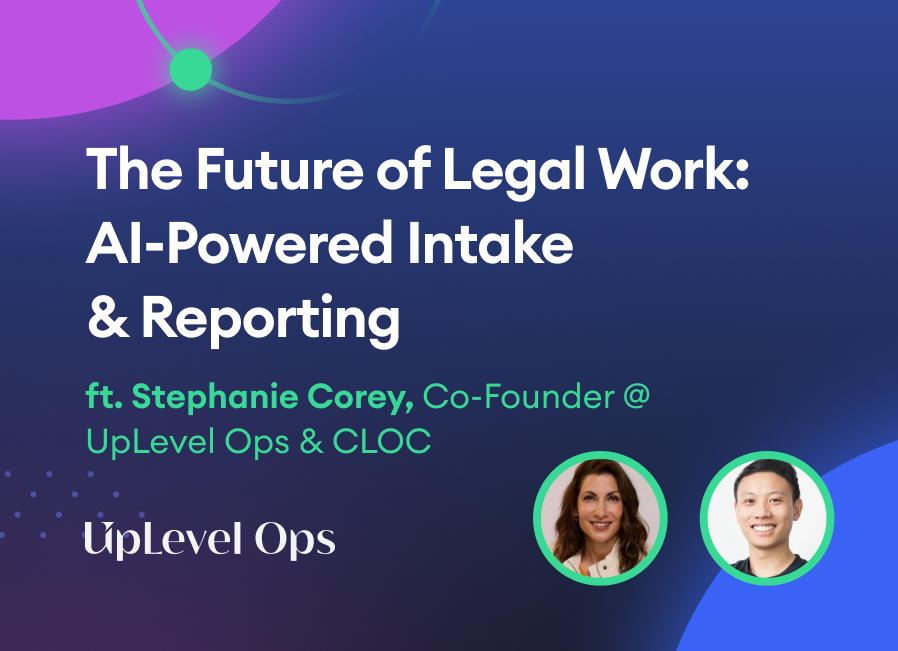Webinar
Legal Ops New Year’s Resolutions & Building a Roadmap for 2024
Join us to discuss the 4 Core Legal Ops Technology Capabilities and how to navigate prioritizing new technology for your team’s unique circumstances and business strategic outcomes in 2024.
- 00:01 Intro to guest Stephanie Corey (UpLevel Ops & LINK co-founder)
- 01:54 Setting legal strategy; aligning with corporate goals
- 04:46 Moving legal from cost center to business enabler
- 06:00 Starting with assessments; strategy as living, visual document
- 08:17 Roadmaps as visual, fluid plans (not 80-page docs)
- 09:32 Gathering inputs: broad/deep interviews across legal & clients
- 11:12 Case study: hidden costs from system workarounds
- 13:17 Staying in legal’s lane; solving for department needs
- 15:31 Hot seat: legal strategy for 80% revenue growth
- 17:19 Accelerating revenue: faster contracts, better negotiations
- 19:33 GenAI’s impact on legal work; lawyers as consultative advisors
- 21:11 “Do less” not “do more with less”; focusing legal’s scope
- 23:36 From strategy to roadmap; identifying solutions & tools
- 25:19 Avoiding vendor noise; importance of expert guidance
- 27:35 Matching needs to tech: CLM vs workflow vs repository
- 31:11 Controlling demos: compare vendors on your use cases
- 33:02 CLM adoption challenges; culture & change readiness
- 35:36 When intake/workflow matters more than CLM
- 37:26 AI reshaping contract data extraction & analysis
- 39:40 Prioritizing roadmap initiatives: willingness, bandwidth, risk
- 41:56 Start with low-hanging fruit; win adoption first
- 43:36 Simpler tools often win: adoption > Cadillac solutions
- 46:15 Communicating the roadmap: avoid messy charts
- 47:29 Good roadmap visuals: simple, one-page view
- 48:35 Include process readiness alongside technology plans
- 50:06 Realistic planning: account for process work & bandwidth
- 51:12 Year-one roadmap view: priorities, resourcing, agility
- 52:58 Wrapping up: LINK community, UpLevel Ops support, Checkbox plug
See Related

Webinar
57 Minutes
.jpg)
Webinar
48 Minutes

Webinar
44 Minutes
.jpg)
Webinar
51 Min

Webinar
56 Minutes

Webinar
44 Minutes



.jpg)